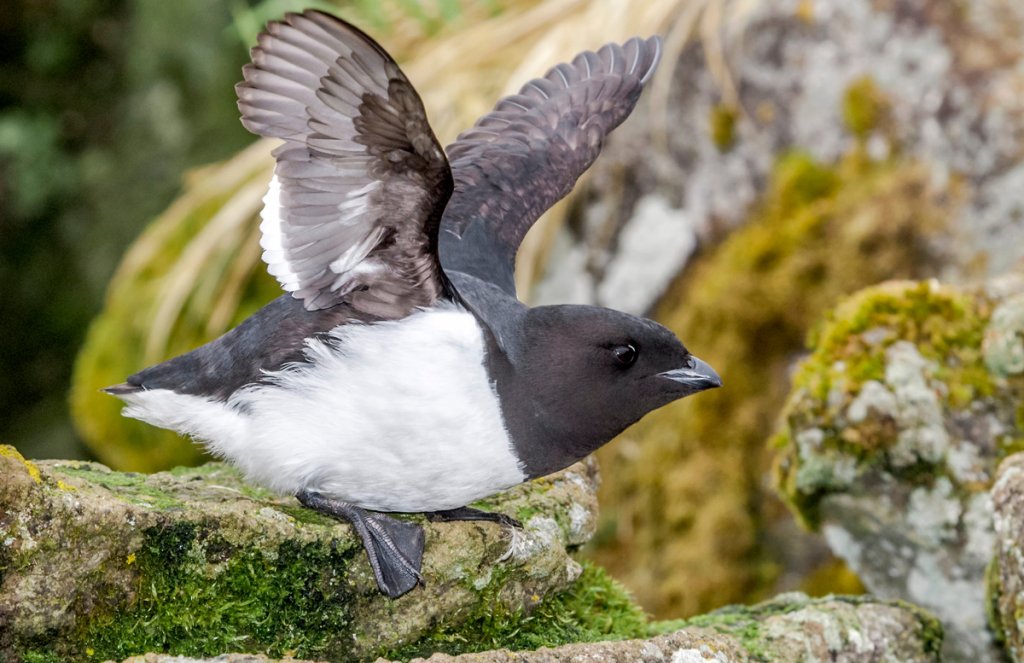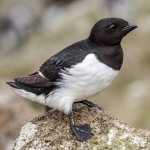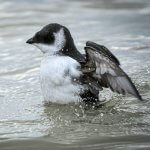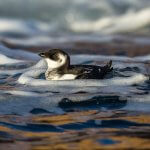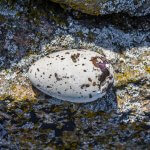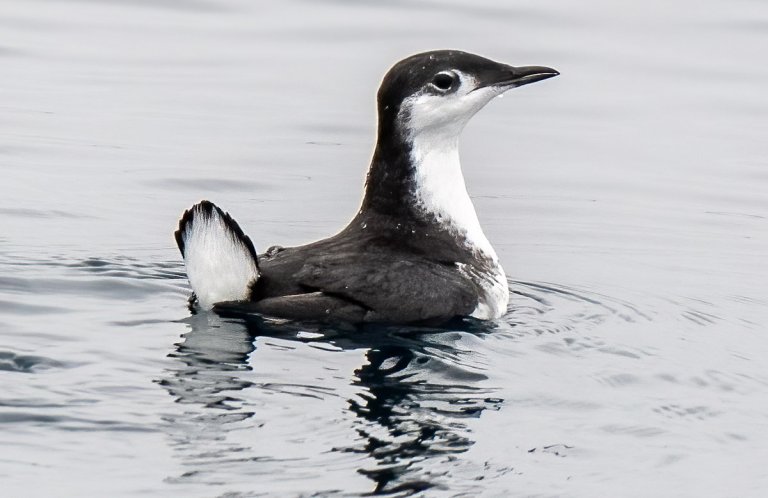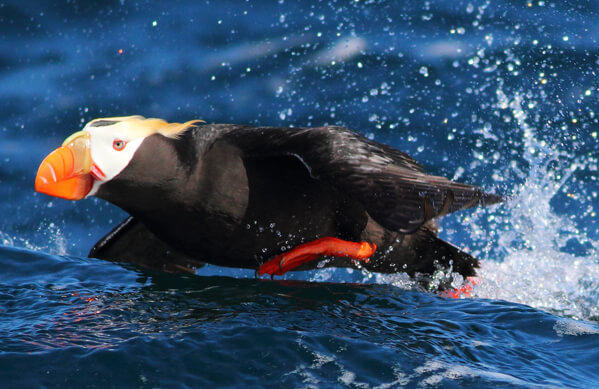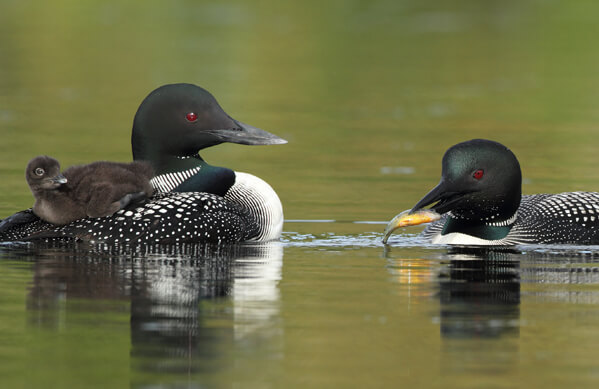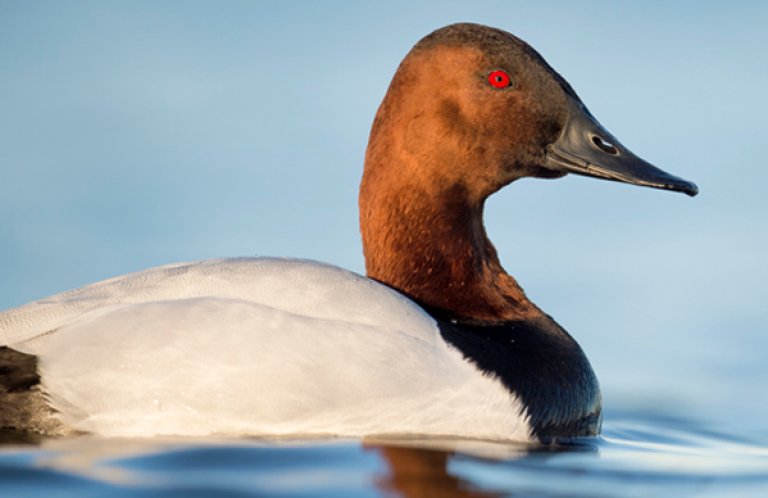About the Dovekie
The charming Dovekie is one of the smallest and most abundant members of the alcid family, sturdy, short-winged seabirds that come to land only to nest, and “fly” underwater in pursuit of their prey. This family includes members as varied as the Guadalupe and Marbled Murrelets, Thick-billed Murre, and Tufted Puffin.
The Dovekie has many names and nicknames, including Little Auk (used throughout most of Europe), King Auk (Norway) and Bull Bird (Newfoundland), the latter name due to this seabird's chunky, neckless appearance. Although it resembles a miniature penguin, the Dovekie is not closely related to birds of that family. This similarity can best be explained by an ecological principle known as convergent evolution.
Separate Yet Similar
Convergent evolution occurs when organisms that aren't closely related evolve in similar ways. Dovekies and penguins are an excellent example of this principle. Each developed separate, yet similar, adaptations to frigid environments at opposite ends of the earth, including thick layers of fat and down feathers for extra warmth; small, stiff wings used to “fly” underwater in pursuit of prey; and webbed feet with strong toenails.
Songs and Sounds
The Dovekie's main vocalization is a trilling call, used for recognition during flight, on land, and on water. This species is most vocal at and around its breeding colonies.
Listen here:
Dovekie Breeding and Feeding
Multiplying By the Millions
The Dovekie breeds in huge colonies that can number into the millions. Before nesting begins, huge flocks congregate on the water near the colony location, circle the area in noisy groups, then land. This species shows high nest-site fidelity, reusing the same nest site and cavity in successive years, and usually mating with the same partner. Pairs court and reunite with a series of head-bowing, nodding, and other postures.
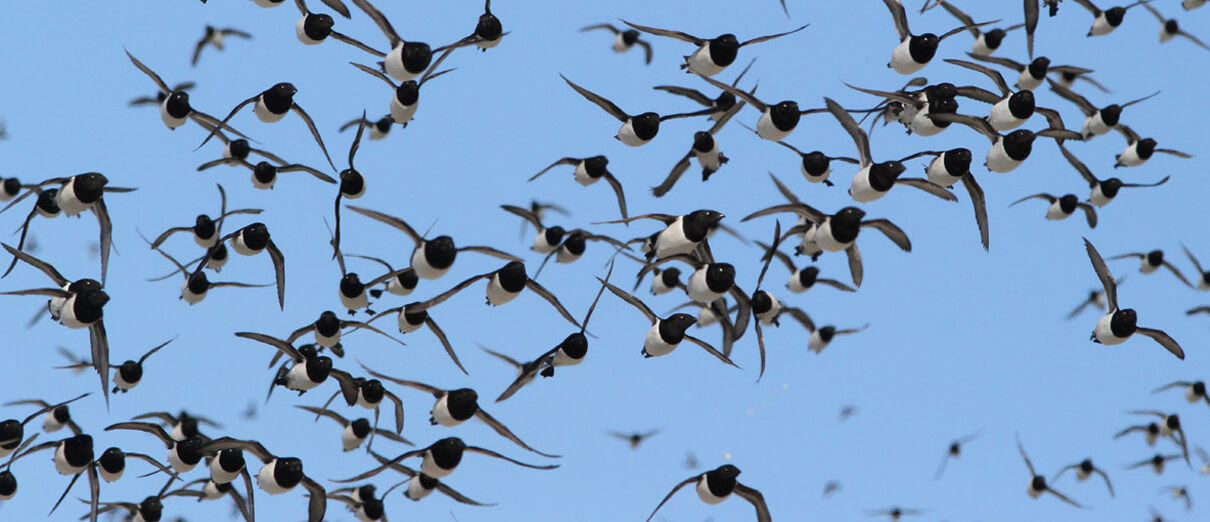
A Dovekie's rudimentary ground nest of small pebbles is hidden in a cliff crevice or beneath a large rock. The female lays a single large egg, which she and her mate take turns incubating. Dovekie chicks hatch covered in thick, dark down, but can't control their body temperature for the first few days of life. The parent Dovekies take turns brooding their chick until it grows juvenile plumage and develops the ability to thermoregulate, then leave it by itself except for feeding times. Both parents feed the chick through regurgitation, carrying the food from sea in a specialized throat pouch. The Dovekie is the only North Atlantic auk species with this adaptation, although some auklet species of the Pacific also carry prey to their nestlings in this way.
Fledgling Dovekies leave the nesting colony and head to sea after about a month, usually accompanied by their male parent. They become fully independent after another month.
Tiny Tidbits
The Dovekie is the only Atlantic seabird to prey mainly on tiny planktonic crustaceans, known as copepods. It also consumes marine worms, small fish, and mollusks, depending on the season.
Most diving birds — such as the Common Loon, Eared Grebe, and Canvasback — use their feet to swim underwater. The Dovekie belongs to a smaller group of seabirds, including penguins and other alcids such as the Atlantic Puffin, that use their wings for underwater propulsion. As a Dovekie forages, it “flies” as deep as 100 feet below the surface using its small, stiff wings, then captures prey as it ascends toward the surface in a zig-zag pattern.
Region and Range
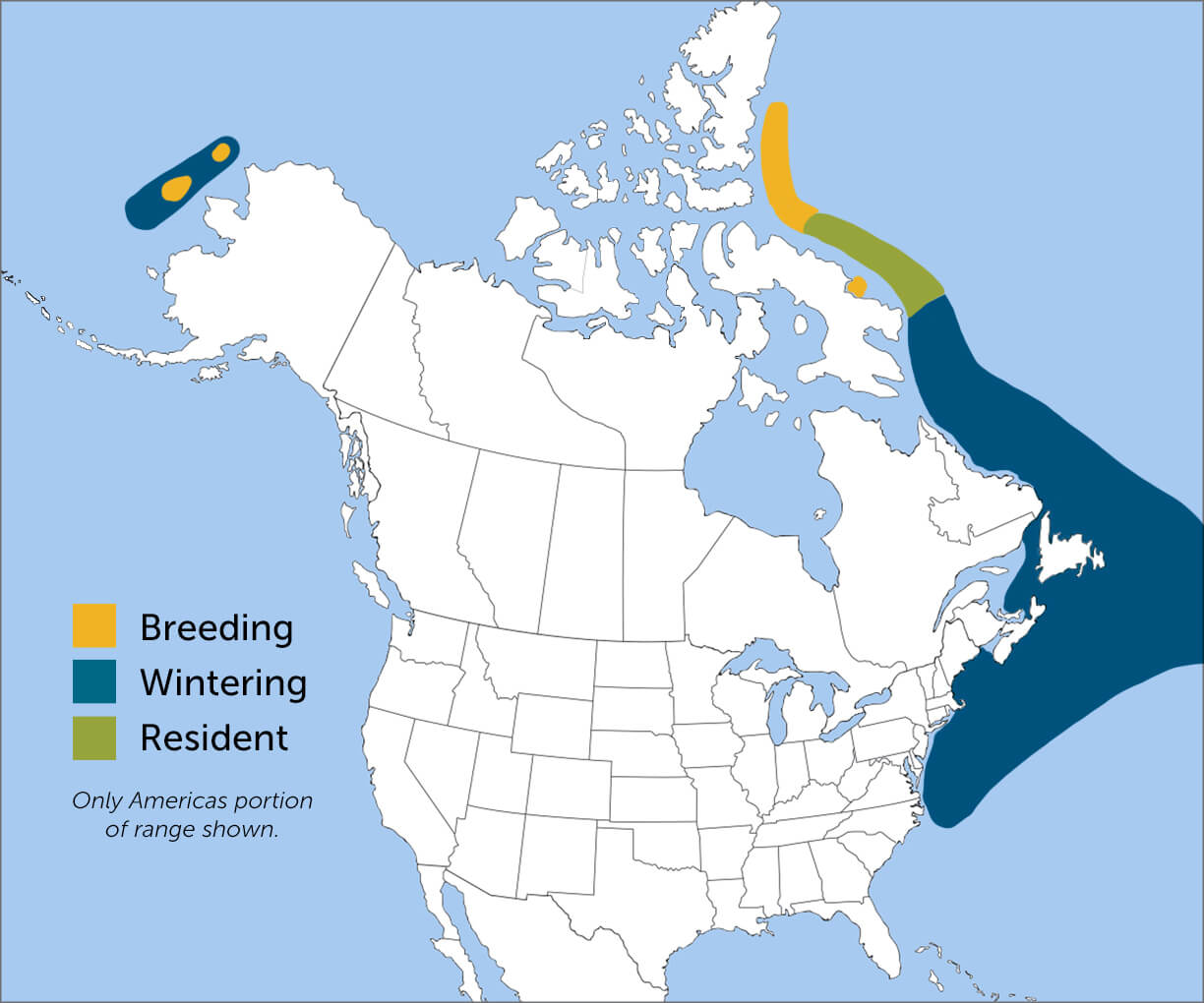
The Dovekie breeds in Arctic regions around the world and winters on the north Atlantic Ocean, although it's sometimes driven further south or even inland by intense storms. Two subspecies of Dovekie are recognized.
Conservation of the Dovekie
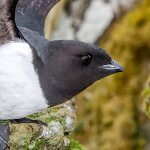
Help support ABC's conservation mission!
Despite extensive harvesting of Dovekies in the past, the species is still abundant and widespread. However, it faces a wide variety of anthropomorphic threats. This small seabird is highly vulnerable to oil spills, and many oiled Dovekies are found washed up on beaches each year. Pesticides and other contaminants can bioaccumulate in this bird's body fat, and plastic pollution poses choking risks. Many Dovekies are fatally ensnared in fishing nets, and risk deadly collisions with offshore oil platforms as they fly to and from their breeding areas. Climate change could influence the amount of sea ice and snow cover at and around Dovekie colonies and at sea, plus affect the availability of their prey.
ABC is working to mitigate many of these threats through its Seabird Program, particularly its fisheries projects, which encourage new technologies, policy changes, and consumer action.
Get Involved
Policies enacted by the U.S. Congress and federal agencies have a huge impact on seabirds. You can help shape these rules for the better by telling lawmakers to prioritize birds and bird-friendly measures. To get started, visit ABC's Action Center.
Plastics pose a deadly threat to seabirds around the world. You can help seabirds by reducing your daily use of plastics. To learn more and get started, visit our Plastics page.
American Bird Conservancy and partners are creating predator-free nest sites for vulnerable seabird species, reducing fishery impacts, and much more. This is a monumental undertaking, requiring the support of many, and you can help by making a gift today.





































